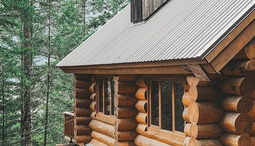- On
- 13 Jul 2023
- Reading time
- 3 minutes
Whether you're a seasoned mountaineer or a casual nature enthusiast, choosing the right hiking jacket is crucial for your comfort and safety. Different types of hiking require distinct gear, and with so many options on the market, selecting the right jacket can be a daunting task. This guide aims to simplify this process for you.
From low-intensity day hikes to multi-day backpacking journeys or high-altitude mountaineering, each type of hiking brings unique requirements for clothing. Day hikers might prefer lightweight and flexible jackets, while backpackers need something durable and versatile. Mountaineers, on the other hand, require jackets that provide superior insulation and weather protection.
Because of the wide variety of hiking jackets for men, it’s important to know what best suits your needs and purposes before you hit the stores. To help you find your preference, we’ll provide a summary of the different types of hiking jacket materials below.
Understanding Jacket Materials
As mentioned earlier, different types of hiking jackets are necessary depending on whether you’re planning on taking your adventure to a nearby summery national park, or if you’re heading on an active winter sports trip taking you up on snowy hilltops.
Synthetic Insulation Jackets
These jackets are known for their excellent warmth-to-weight ratio and ability to retain heat even when wet. They dry quickly and are generally less expensive than down jackets. However, they tend to be bulkier and less compressible.
Down Insulation Jackets
Down jackets offer unbeatable warmth and are highly compressible, making them ideal for cold, dry climates and high-altitude hiking. The downside is their performance suffers when they get wet, although this can be mitigated with hydrophobic down and waterproof shells.
Softshell Jackets
Softshell jackets excel in breathability, flexibility, and resistance against wind and light rain, making them ideal for high-exertion activities in mild conditions. They are, however, less effective in heavy rain or extremely cold conditions.
Hardshell Jackets
Hardshell jackets provide the best protection against harsh weather conditions. They are waterproof, windproof, and durable. Despite being less breathable than softshells, most come with ventilation features to mitigate this.
Key Factors to Consider When Comparing Hiking Jackets
Finding the right hiking gear is just as important as eating right for a strenuous activity. When selecting the perfect hiking jacket, several critical factors come into play. Each one contributes significantly to the overall performance and comfort of the jacket. Here's a more detailed look at these crucial considerations.
Waterproofing
One of the primary functions of a hiking jacket is to shield you from the elements, and waterproofing is a vital aspect of this. If you plan to hike in areas with rainfall or wet snow, a waterproof jacket is essential. Look for materials like Gore-Tex or eVent, known for their excellent waterproof properties. Additionally, features such as taped seams and water-resistant zippers add an extra layer of protection, preventing water from seeping through the cracks. Some jackets also have a Durable Water Repellent (DWR) coating to make water bead up and roll off the fabric.
Breathability
As much as a hiking jacket should protect you from external moisture, it should also allow internal moisture (sweat) to escape. This breathability is crucial during strenuous hikes where your body heat increases. A breathable jacket lets sweat vapor escape, preventing overheating and maintaining comfort. Many waterproof materials balance protection and breathability, but for high-exertion activities, you might want to consider jackets with additional ventilation features like pit zips.
Durability
Hiking exposes your gear to harsh conditions, and your jacket should be able to withstand the rigors of your adventure. Durability often comes down to the material's strength and construction quality. Reinforced areas like shoulders and elbows can also increase a jacket's lifespan.
Fit
A good hiking jacket should fit well - not too tight, not too loose. It should allow enough room for layering underneath while not restricting motion. Key areas like cuffs and neck should be snug enough to seal in warmth and keep out the elements, but not so tight as to be uncomfortable. Adjustable features like cuffs, hems, and hoods can help you customize the fit.
Versatility
Lastly, a versatile jacket can adapt to various weather conditions and types of hikes, offering great value. For example, 3-in-1 jackets come with a removable inner insulation layer and a waterproof outer shell. You can wear each layer separately or together, making it an excellent option for a wide range of climates and activities.
Conclusion
In conclusion, selecting the perfect hiking jacket involves understanding the different materials available, your specific hiking needs, and the key factors to consider. With this comprehensive guide, you're now ready to make an informed decision and hit the trails with confidence.








